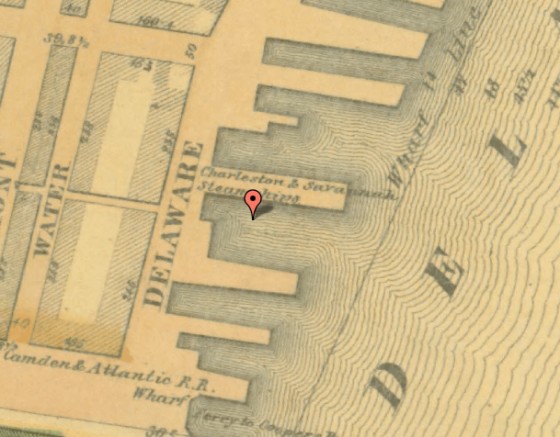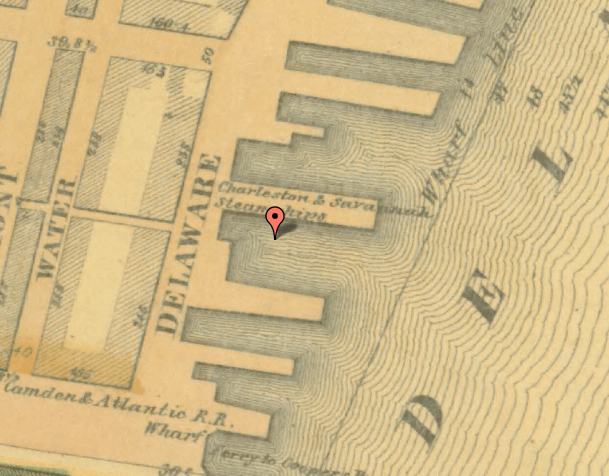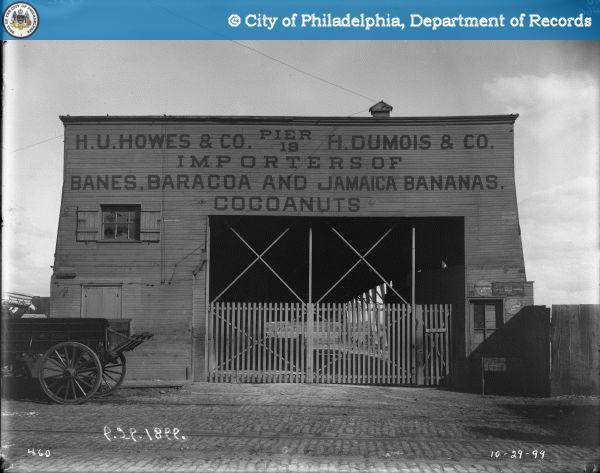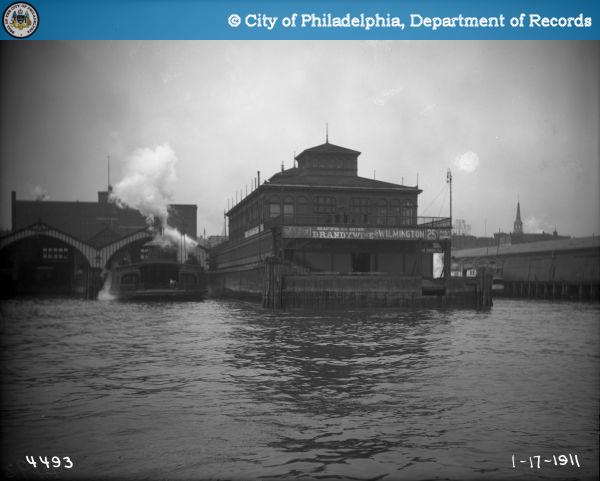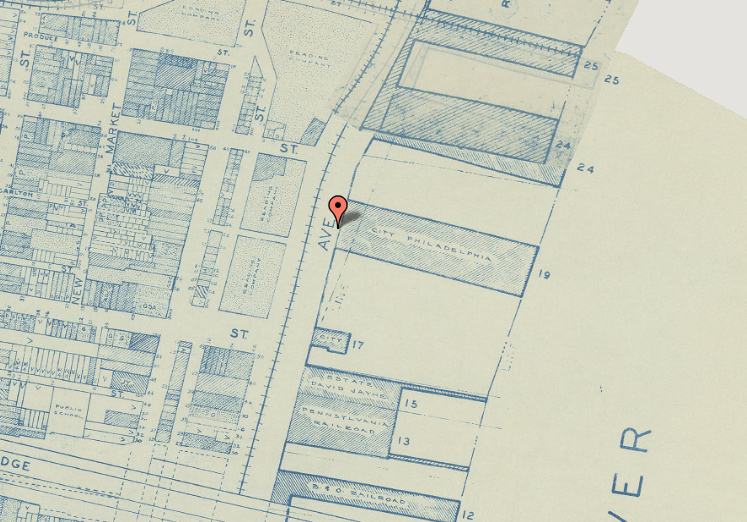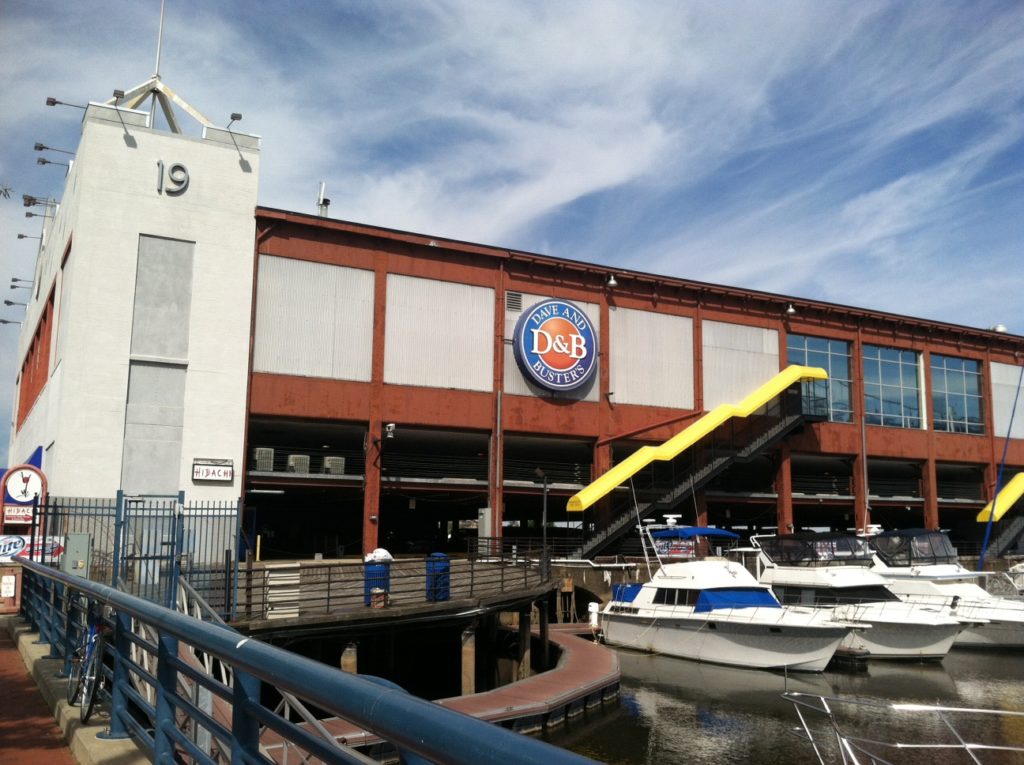Philadelphia’s waterfront has long been the subject of ambition and disappointment. Much discussion has centered on repurposing the dozens of piers that once served the city’s booming maritime and industrial sectors. To date, the greatest successes are those lining the river just between Callowhill and the gorgeous Race Street Pier. At the northern point of this stretch, Pier 19 has always been a hub for development. Listed today as 325 N. Columbus Blvd., Pier 19 has likely been in use in some form for more than 200 years. Our first available records come from Samuel L. Smedley’s 1862 Philadelphia Atlas, which lists this as the docking point for the Charleston and Savannah Steamships.
By the turn of the century, Pier 19 was no longer specific to the aforementioned southern port cities. Instead, it moved through the hands of a number of different commercial shipping operations over the ensuing 50 years. The photo here below, taken from the Philadelphia Department of Records, shows the pier from the street side in 1899, at which point it was occupied by partners H.U. Howes & Co. and H. Dumois & Co., whom the wharf signage identifies as “Importers of Banes, Baracoa and Jamaica Bananas – Cocoanuts.”
In the early 1900s, the city was given broad authority to take the necessary steps to improve the appeal and usability of the Delaware waterfront. (Sound familiar?) According to the Harry Kyriakodis text, Philadelphia’s Lost Waterfront, the Department of Wharves used this authority to construct a series of city-owned piers. The first of these was the Vine Street Pier, which opened for business on Pier 19 in 1911. At 571 feet, it was the largest pier in Philadelphia for some period of its existence. Kyriakodis tells that it was originally leased to the Philadelphia & Gulf Steamship Company, with the pier once again providing service to southern ports. The pier is shown here below during its first year of operation, in a photo taken from Philadelphia Speaks.
The Vine Street Pier would also spend some period of its history in service to the Italia Line, a company that carried thousands of Italian immigrants to their new home in Philadelphia. An aerial view, taken from the blog Philly & Stuff, shows Pier 19 in 1924. Across the next several decades, the pier would remain in operation under city ownership. There is a gap in available information on the exact usage of the pier during this time. Land Use Maps from 1942 and 1962 merely identify the location as City of Philadelphia property.
By the 1990s, the pier had evolved into a site for public events such as fireworks displays and Best of Philly food-vending events like the one reported in a 1991 Inquirer article here. The biggest leap in the steel structure’s 100-year history, however, was just around the corner. In 1994, Dave & Buster’s filled the space with a sprawling restaurant, sports bar and arcade. No offense to Jamaican Bananas or Cocoanuts, but Pier 19 is way more fun now.
–David Tomar

